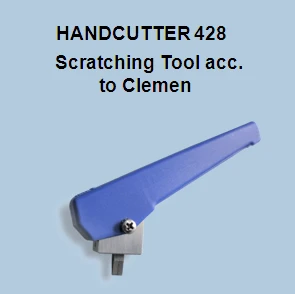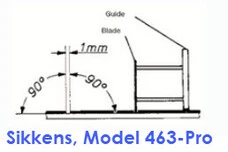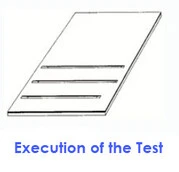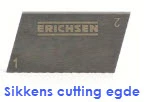Tools 1
Coatings & Industry > CORROSION > Specimen preparation
The correct and precise specimen preparation is
very important to get repeatable results.
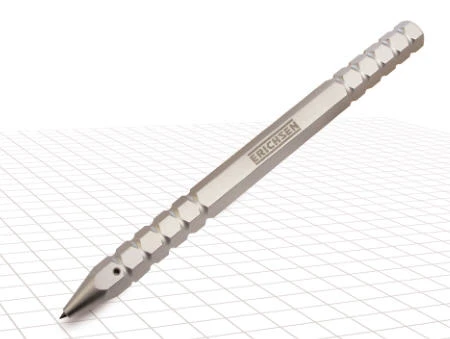
Scratching Tool acc. to van Laar, Model 426
Purpose and Application
Scratching-in of the St. Andrew's cross into test panels is a well-known preparation for short-term and endurance corrosion tests, enabling the examination of the protection of the coating against rusting of the substrate underneath the coating ("underrusting").
The Sratching Tool acc. to van Laar is a handy universal tool: for producing accurately defined incisions on the surface of the coating in preparation of forced corrosion tests, such as salt spray, continuous or intermittent immersion, accelerated weathering, gas corrosion and humiditiy tests.
Design of Apparatus
The 0.5 mm dia. spherical tungsten scratch needle is firmly mounted in a pencil-shaped holder made of anodized hard aluminium.
The special handy design of the instrument guaranties a stable appliance during the scratching operation.
The spherical point was submitted to the following endurance test:
A cylinder of 100 mm dia. free-cutting steel chucked in a lathe was scratched by a scratch needle at a surface speed of 20 cm/s (8") and a pressure of 50 N .
No damage of the spherical point did occur after a run of 18000 cm .
It proved that at least 2000 scratches of 90 mm length each can be made without a failure.
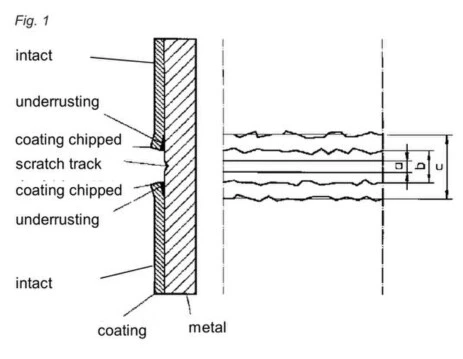
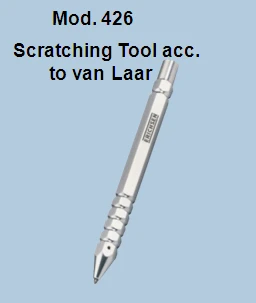
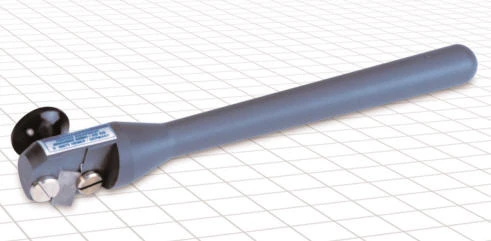
Scratch Stylus acc. to Sikkens, Model 463
Application and Test Principle
The scratching stylus method is used to produce defined damages (cracks) on coated test panels to be used in corrosion tests, as, for instance, the Fog Spray Test acc. to DIN EN ISO 9227 with the ERICHSEN Corrosion Testing Apparatus, Models 606 and 608.
This method provides a criterion for the evaluation of the extent or influence of corrosion underneath a coating and its effect on the adhesion. The length of the lateral damage underneath the coating serves as a measure of the corrosion protection factor.
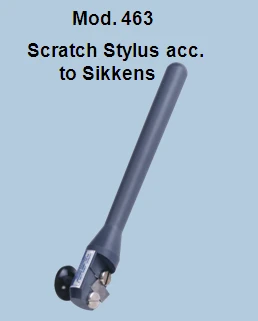
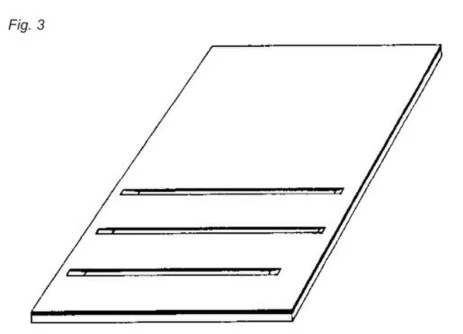
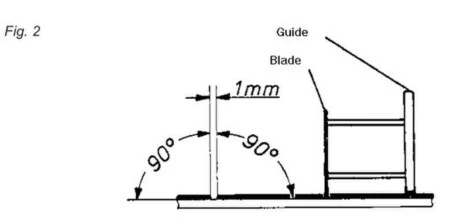
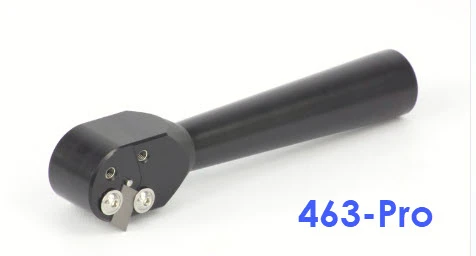
Sample Preparation Model 463-Pro
The Sikkens model 463 Pro scratch stylus
Hand-held tool for applying defined damages (scribes) on coated test panels; universally handy handle, guide wheel and a Sikkens cutting edge of 1.0 mm (both sides usable)
The Scratch Stylus acc. to Sikkens, Model 463-Pro, consists of a carbide cutting edge guided by a supporting knob and a grip.
In the standard version of Model 463-Pro the Sikkens cutting edge has a width of 1.0 mm and rectangular edges.
It is adjustable in the horizontal direction by raising or lowering the cutting edge, using the locking screws.
Upon request, Sikkens cutting edges of 0.5 mm and 2.0 mm can also be supplied; the cutting edges can be used on both sides
The Scratch Stylus acc. to Sikkens, Model 463-Pro is used to produce defined damages (scribes) on coated test panels to be used in corrosion tests, as, for instance, the Fog Spray Test acc. to DIN EN ISO 9227 with the ERICHSEN Corrosion Testing Apparatus, Models 606 and 608.
This method provides a criterion for the evaluation of the extent or influence of corrosion underneath a coating and its effect on the adhesion.
The length of the lateral damage underneath the coating serves as a measure of the corrosion protection factor.
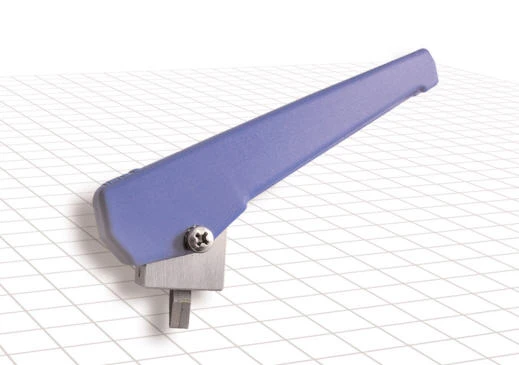
Scratching Tool acc. to Clemen, HANDCUTTER 428
Purpose and Application
It is a common method to prepare coated test panels for corrosion tests by applying various linear scratches in a vertical, horizontal or intersecting manner in such a way that the resistance of the coating system against rust formation under the coating can be tested.
Beside the use of a test tip according to "van Laar" as scratch tool, frequently the use of a test tip according to "Clemen" (included in the scope of supply) is specified for this procedure.
Sometimes a single test tip for cross hatch cutting tests may also be used.
Depending on the requirements the user has to meet, these test tips used as scratch tools are appropriate tools to produce defined scratches on coating surfaces provided for accelerated corrosion tests, such as condensation water tests, gas corrosion tests, salt spray tests, continuous or alternate immersion tests and accelerated weathering tests etc.
